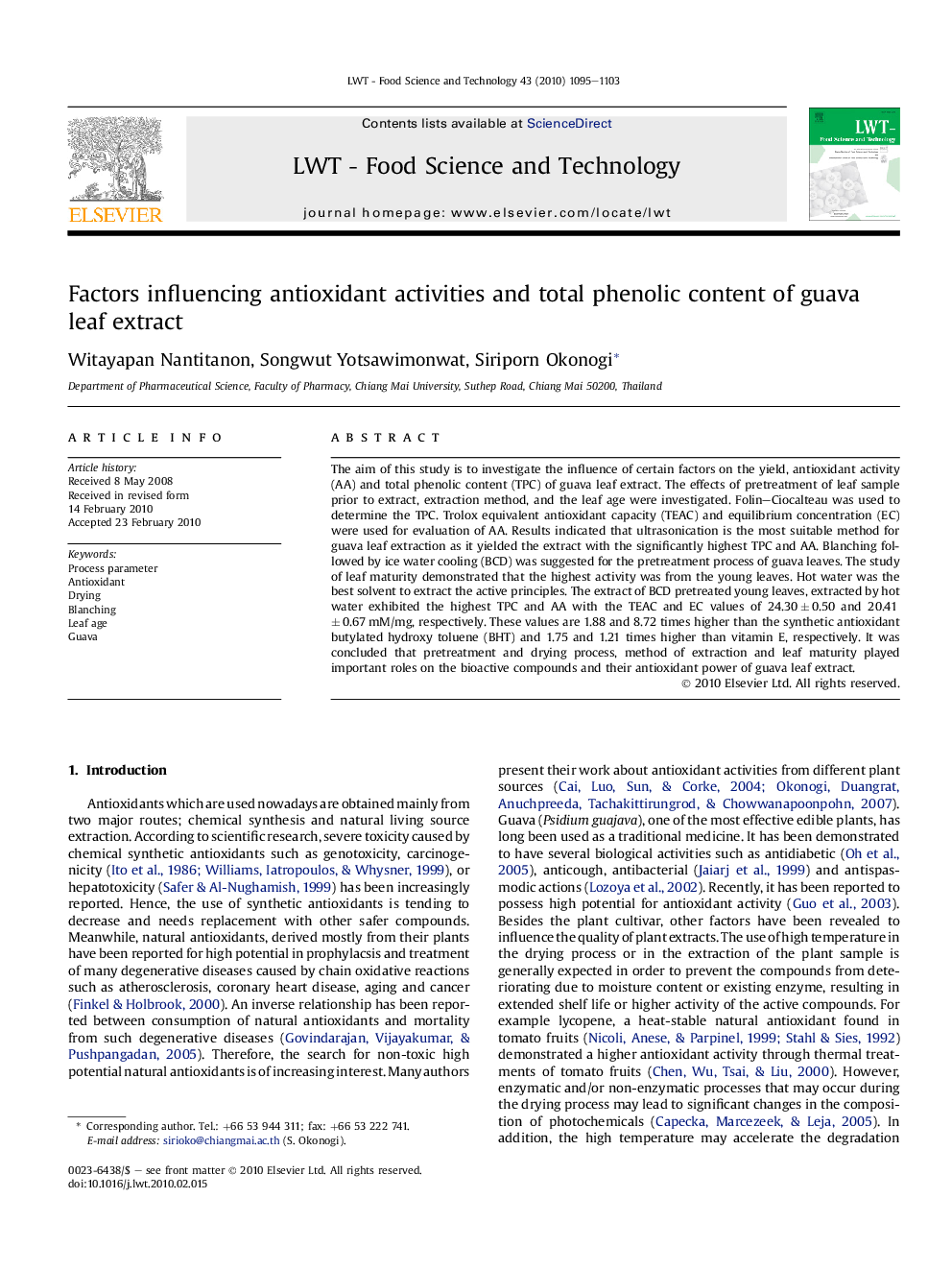| Article ID | Journal | Published Year | Pages | File Type |
|---|---|---|---|---|
| 4564517 | LWT - Food Science and Technology | 2010 | 9 Pages |
The aim of this study is to investigate the influence of certain factors on the yield, antioxidant activity (AA) and total phenolic content (TPC) of guava leaf extract. The effects of pretreatment of leaf sample prior to extract, extraction method, and the leaf age were investigated. Folin–Ciocalteau was used to determine the TPC. Trolox equivalent antioxidant capacity (TEAC) and equilibrium concentration (EC) were used for evaluation of AA. Results indicated that ultrasonication is the most suitable method for guava leaf extraction as it yielded the extract with the significantly highest TPC and AA. Blanching followed by ice water cooling (BCD) was suggested for the pretreatment process of guava leaves. The study of leaf maturity demonstrated that the highest activity was from the young leaves. Hot water was the best solvent to extract the active principles. The extract of BCD pretreated young leaves, extracted by hot water exhibited the highest TPC and AA with the TEAC and EC values of 24.30 ± 0.50 and 20.41 ± 0.67 mM/mg, respectively. These values are 1.88 and 8.72 times higher than the synthetic antioxidant butylated hydroxy toluene (BHT) and 1.75 and 1.21 times higher than vitamin E, respectively. It was concluded that pretreatment and drying process, method of extraction and leaf maturity played important roles on the bioactive compounds and their antioxidant power of guava leaf extract.
